Cannabis, with its rich history and diverse consumption methods, has become an integral part of cultures around the world. Among the various ways enthusiasts indulge, the use of joints, blunts, and spliffs stands out as a cornerstone of cannabis culture. Each method offers a unique experience, shaping not only how cannabis is enjoyed but also the social rituals and traditions surrounding its use.
In this exploration, we delve into the world of joints, blunts, and spliffs, unraveling the nuances that differentiate these forms of consumption. Understanding these distinctions is essential, not just for seasoned enthusiasts, but also for those new to the cannabis scene. By examining the components, techniques, and cultural significance of each method, we aim to provide a comprehensive guide that sheds light on the diverse tapestry of cannabis consumption. Join us on this journey as we uncover the intricacies of joints, blunts, and spliffs, and gain insights into the vibrant and evolving cannabis culture.
Table of Contents:
Joints: A Classic Cannabis Experience
- Definition and Components of Joints
- Rolling Techniques and Traditions
- Pros and Cons of Joints
- Popularity and References in Popular Culture
- Differences in Composition, Taste, and Effects
Blunts: Rolling Up with Style
- Definition and Origin of Blunts
- Ingredients and Rolling Process
- Cultural Significance and Trends
- Differences in Composition, Taste, and Effects
Spliffs: The Hybrid Choice
- Definition and Components of Spliffs
- Mixing Cannabis with Tobacco: Reasons and Effects
- Differences in Composition, Taste, and Effects
Legal and Cultural Perspectives
- Legal Status of Cannabis Consumption Globally
- Cultural Norms and Attitudes Towards Methods
- Impact of Legalization on Consumption Habits
Conclusion
Joints: A Classic Cannabis Experience
Definition and Components of Joints
Joints, often considered the quintessential way to enjoy cannabis, represent a timeless tradition in the world of recreational and medicinal marijuana use. A joint, simply put, is a cannabis cigarette, typically made by rolling ground cannabis flower into a thin, cylindrical paper. The paper, commonly referred to as rolling paper or a joint paper, is designed to burn evenly and smoothly, allowing for a consistent cannabis experience.
The components of a joint are fundamental to its identity. The heart of a joint lies in the cannabis strain used, which can range from the mellow Indicas to the energetic Sativas, each offering a distinct flavor profile and effect. The ground cannabis is delicately spread along the rolling paper, with care taken to distribute it evenly, ensuring a balanced burn.
Accompanying the cannabis, rolling papers play a pivotal role. These papers come in various sizes, materials, and flavors, catering to different preferences within the cannabis community. Some prefer unflavored, ultra-thin papers to experience the pure taste of the cannabis, while others opt for flavored papers, adding a subtle nuance to the overall smoking experience.
The art of rolling a joint involves skillfully tucking and sealing the paper to create a tightly packed, functional cannabis cigarette. Traditionally, joints are twisted at one end, commonly referred to as the “filter” or “crutch,” which serves as a handle, prevents burnt fingers, and allows for better airflow during inhalation.
Joints, embodying simplicity and universality, provide enthusiasts with a straightforward, unadulterated cannabis encounter. Whether enjoyed alone or in social settings, the joint remains a classic choice, symbolizing the essence of cannabis culture.
Rolling Techniques and Traditions
The process of rolling a joint is an art form in itself, steeped in tradition and individual preference. Enthusiasts often develop their unique rolling techniques, resulting in joints of various shapes and sizes. While some prefer the simplicity of a straight, evenly packed joint, others opt for more elaborate creations, experimenting with techniques like the “cone” shape, where the joint is wider at the top, resembling an ice cream cone.
Traditionally, rolling a joint involves breaking down the cannabis buds into a consistency that ensures an even burn. This is typically achieved by using a grinder, a device designed specifically for this purpose. Ground cannabis is then spread evenly along the rolling paper. Some seasoned enthusiasts incorporate a “crutch” or filter, a thin piece of rolled-up paper or cardboard, at one end. This not only provides structural support but also prevents the inhalation of loose cannabis particles.
The rolling process is as diverse as the individuals rolling them. Some prefer a tight, compact joint for a slow burn, while others opt for a looser roll, allowing for a smoother draw. Techniques for sealing the joint also vary; licking the adhesive edge of the rolling paper and carefully sealing it is a common method, while some use a small, moist sponge or cloth for a more precise seal.
Traditions surrounding joint rolling are often shared within social circles. Passing a joint is a communal act, fostering connections and camaraderie among users. There are unwritten rules, like the person who rolls the joint often gets to spark it, and the joint is typically passed to the left. Such customs contribute to the rich tapestry of cannabis culture, highlighting the social and communal aspects of joint consumption.
Regardless of the technique employed, rolling a joint is a skill that, when mastered, enhances the overall cannabis experience. Each twist and tuck symbolize the creativity and camaraderie embedded in the cannabis community, making joint rolling more than just a method of consumption—it’s an art form that brings people together.
Pros and Cons of Joints
Joints, with their simplicity and ubiquity, have both advantages and drawbacks that make them a subject of consideration for cannabis enthusiasts.
Pros:
- Ease of Use: Rolling and smoking a joint is relatively straightforward, making it accessible for beginners and seasoned users alike.
- Social Aspect: Passing a joint among friends fosters a sense of community and shared experience, making it a popular choice in social settings.
- Versatility: Joints can be rolled with various strains, allowing users to explore different flavors, aromas, and effects.
- Portability: Joints are compact and portable, making them convenient for on-the-go use without the need for additional equipment.
- Quick Onset: Smoking a joint delivers cannabinoids into the bloodstream rapidly, providing quick relief for those using cannabis for medicinal purposes.
- Customization: Users can control the size and potency of the joint, tailoring the experience to their preferences.
Cons:
- Wastefulness: Joints continue to burn even when not actively smoked, leading to potential waste of cannabis.
- Inconsistency: The quality of a joint can vary based on the rolling skills, affecting the overall experience.
- Health Concerns: Smoking any substance, including cannabis, involves inhaling potentially harmful compounds, which can have adverse effects on respiratory health.
- Smell: Joints emit a strong odor, which can be a concern for users looking to consume discreetly.
- Tolerance Buildup: Regular joint smokers may develop tolerance more quickly, requiring larger quantities to achieve the desired effects over time.
- Legal Issues: In areas where cannabis consumption is not legal, possessing or smoking joints can lead to legal consequences.
In summary, joints offer a classic and communal cannabis experience, but users should be mindful of the potential drawbacks, considering their preferences, social context, and health concerns when choosing this method of consumption.
Popularity and References in Popular Culture
Joints have achieved iconic status in popular culture, becoming emblematic symbols of cannabis consumption across various forms of media and entertainment. Their prevalence in movies, music, and literature has contributed significantly to the widespread recognition of joints in the public consciousness.
Popularity in Popular Culture:
- Movies and Television: Joints are frequently depicted in movies and TV shows, often representing relaxation, rebellion, or camaraderie among characters. From stoner comedies to serious dramas, joints have become essential props, shaping the portrayal of cannabis culture on screen.
- Music: Numerous songs celebrate or reference joints, highlighting their role in social gatherings, relaxation, or artistic inspiration. Artists from diverse genres, including reggae, hip-hop, and rock, have incorporated joint-related lyrics, further embedding their cultural significance.
- Art and Literature: Joints have been a subject of artistic expression and literary exploration. Artists have painted them, photographers have captured them, and writers have penned stories that revolve around joint-smoking characters, reflecting the intertwined relationship between cannabis and creativity.
References in Popular Culture:
- Counterculture Movements: Joints played a pivotal role in the counterculture movements of the 1960s and 1970s. They became symbols of resistance, freedom, and non-conformity, shaping the ethos of those eras.
- Celebrities and Influencers: Public figures, especially in the entertainment industry, have openly embraced joints, normalizing their use and challenging social stigmas. Such visibility has contributed to changing societal attitudes towards cannabis.
- Internet Culture: With the rise of social media and internet culture, joints continue to be a popular subject of memes, GIFs, and online discussions. Online platforms have facilitated a global dialogue about joint rolling techniques, favorite strains, and shared experiences, fostering a sense of community among cannabis enthusiasts.
The enduring popularity of joints in popular culture has not only made them symbols of relaxation and camaraderie but has also played a role in shaping public perceptions of cannabis. As society’s views evolve, joints remain integral to the broader conversation about cannabis, serving as both a cultural artifact and a means of connection among enthusiasts.
Differences in Composition, Taste, and Effects
While joints are a universal method of cannabis consumption, the subtle nuances in their composition can lead to diverse tastes and effects. These differences, often influenced by the strain of cannabis used and individual preferences, contribute to the rich tapestry of experiences within the world of joints.
Composition:
- Strain Variety: The choice of cannabis strain significantly impacts a joint’s composition. Indica strains, with their relaxing properties, might result in a mellow and calming joint, whereas Sativa strains, known for their energizing effects, can create a more uplifting experience. Hybrid strains, combining Indica and Sativa genetics, offer a balanced composition, blending the best of both worlds.
- Additives: Some users enhance their joint experience by adding concentrates like hash, wax, or oils, increasing the joint’s potency and altering its composition. These additions can intensify the effects and create a unique taste profile.
Taste:
- Terpenes: Terpenes, aromatic compounds found in cannabis, contribute to its distinctive flavors and aromas. Joints crafted from strains with high levels of specific terpenes might offer tastes ranging from citrusy and fruity to earthy and spicy. The terpene profile influences the overall taste experience, making each joint unique.
- Paper Choice: The type of rolling paper used can subtly influence the joint’s taste. Some papers are flavorless, allowing the natural cannabis taste to dominate, while others, infused with flavors like cherry or vanilla, add an extra layer of complexity to the smoking experience.
Effects:
- Onset and Duration: The effects of a joint typically onset within minutes, providing a rapid onset of the desired sensations. The duration of effects can vary based on factors such as the user’s tolerance, the strain’s potency, and the amount smoked. Generally, the effects last for a couple of hours, making joints a popular choice for users seeking a relatively short but potent experience.
- Psychoactive Experience: Joints can deliver a range of psychoactive effects, from euphoria and creativity to relaxation and sedation. The balance between THC (tetrahydrocannabinol) and CBD (cannabidiol) in the chosen strain influences these effects. THC-dominant strains often provide a more intense psychoactive experience, while CBD-dominant strains offer a milder, more therapeutic effect.
Understanding these differences allows users to tailor their joint-smoking experience to match their desired taste and effect preferences, making each session a personalized and enjoyable journey into the world of cannabis.
Blunts: Rolling Up with Style
Definition and Origin of Blunts
Blunts, a beloved method of cannabis consumption, represent a fusion of creativity, craftsmanship, and cultural heritage. Unlike joints, blunts are crafted using cigar wraps or emptied cigars, offering a larger and often more flavorful smoking experience.
Definition:
A blunt is essentially cannabis rolled in a tobacco leaf wrapper, often sourced from emptied cigars. The term “blunt” comes from the Phillies Blunt brand, which originally popularized this method. The tobacco leaf wrap provides a unique taste, combining the flavors of both cannabis and tobacco. Blunts are known for their larger size compared to joints, making them a preferred choice for those seeking a longer-lasting and more potent session.
Origin:
Blunts have their roots in the hip-hop culture of the 1980s. Legend has it that rappers in New York City’s Harlem neighborhood pioneered the practice of hollowing out cigars, filling them with cannabis, and then resealing them. This creative adaptation of cigar smoking quickly gained popularity, spreading throughout the hip-hop community and becoming an integral part of urban culture.
The choice of using cigar wraps can be attributed to their sturdiness and ability to hold a significant amount of cannabis, allowing for a communal smoking experience. Blunts offer a flavorful and aromatic smoke, thanks to the tobacco leaf’s rich characteristics, enhancing the overall sensory experience for enthusiasts.
In addition to the cultural significance, blunts have become a symbol of style and sophistication within the cannabis community. Rolling a perfect blunt requires skill and finesse, with aficionados often showcasing their craftsmanship through intricate designs, twists, and folds. This artistry has elevated blunts to a status beyond mere consumption, transforming them into a form of self-expression and creativity.
As blunts continue to evolve, their popularity persists, making them a staple in cannabis culture. The blend of tradition, flavor, and style inherent in blunts showcases the dynamic nature of cannabis consumption, where innovation and cultural heritage intersect in a puff of smoke.
Ingredients and Rolling Process
Rolling a blunt is not just a method of consumption; it’s an art form. The choice of ingredients and the rolling process are crucial aspects that define the experience of smoking a blunt.
Ingredients:
- Cannabis: The heart of any blunt is the cannabis strain used. Users can select their preferred strain, whether Indica, Sativa, or a hybrid, to tailor the effects to their desires. The amount of cannabis used depends on personal preference and the size of the blunt being rolled.
- Tobacco Leaf Wrap: Blunts are unique for their use of tobacco leaf wraps. These wraps, often sourced from emptied cigars or specifically designed blunt wraps, contribute to the distinctive taste and aroma of blunts. Some enthusiasts prefer flavored wraps, adding an extra layer of taste complexity.
- Crutch (Optional): Similar to joints, blunts can include a crutch, a rolled-up piece of paper or cardboard inserted at one end. The crutch provides structural support, prevents loose cannabis from entering the mouth, and allows for better airflow.
Rolling Process:
- Prepare the Wrap: Start by splitting the tobacco leaf wrap down the middle, removing any leftover tobacco. If using a specifically designed blunt wrap, it may come pre-split. Ensure the wrap is slightly moistened to make it pliable for rolling.
- Add Cannabis: Evenly distribute the ground cannabis along the length of the wrap. The amount used depends on personal preference and the size of the blunt. Spread it out gently to ensure a consistent burn.
- Roll the Blunt: Carefully tuck and roll the wrap around the cannabis, starting from one end and working your way to the other. Use your fingers to shape and compact the blunt. Once rolled, lick the edge of the wrap to seal it, or use a small amount of moisture to secure the seam.
- Shape and Pack: After rolling, gently squeeze the blunt to shape it. Some users prefer a straight shape, while others like a tapered or “cone” shape. Use a small, thin object, like a pen, to pack the cannabis down, ensuring an even and firm texture inside the blunt.
- Bake and Enjoy: To enhance the flavor and ensure an even burn, some enthusiasts “bake” the blunt lightly by passing a flame along its length without inhaling. This step is optional but can contribute to a smoother smoking experience.
Rolling a blunt is more than just a means of consuming cannabis; it’s a ritual that embodies creativity and craftsmanship. Each step of the process, from selecting the strain to the final roll, reflects the user’s preferences and style, making every blunt a unique and personalized creation.
Cultural Significance and Trends
Blunts, beyond being a method of cannabis consumption, hold a significant cultural significance, especially within certain communities. The act of rolling and sharing a blunt has become a ritual, signifying camaraderie, celebration, and social connection.
Cultural Significance:
- Community Bonding: Rolling and passing a blunt often symbolize unity and friendship within communities. It is common for friends to gather, share stories, and enjoy a blunt together, strengthening social bonds.
- Celebration and Ritual: Blunts are often associated with celebrations and special occasions. They are a staple at parties, concerts, and festivals, serving as a communal experience that enhances the celebration’s atmosphere.
- Creative Expression: Rolling a blunt has become an art form. Enthusiasts experiment with different rolling techniques, shapes, and designs, showcasing their creativity and skill. This artistic expression has become an integral part of the cannabis culture.
Trends and Evolving Practices:
- Flavored Blunt Wraps: The market offers a wide array of flavored blunt wraps, adding an extra layer of taste and aroma. Popular flavors range from fruity and sweet to exotic and spicy, allowing users to customize their smoking experience.
- Blunt Challenges: Online platforms and social media have popularized “blunt challenges,” where users attempt to roll the largest or most creative blunt. These challenges showcase the diversity of rolling styles and inspire enthusiasts to push the boundaries of creativity.
- Cannabis Events and Competitions: Cannabis-related events and competitions often feature categories for the best-rolled blunts. These events celebrate the artistry of rolling and provide a platform for enthusiasts to showcase their skills and innovations.
- Blunt Culture in Music: Blunts have been glorified in various music genres, particularly in hip-hop and rap. Many artists reference blunts in their lyrics, further embedding their cultural significance in the music industry.
As cannabis legalization spreads and societal attitudes shift, the cultural significance of blunts continues to evolve. They remain a symbol of social connection, artistic expression, and celebration, reflecting the diverse and dynamic nature of contemporary cannabis culture.
Differences in Composition, Taste, and Effects
Blunts, characterized by their unique blend of cannabis and tobacco, offer a distinctive smoking experience that sets them apart from other methods of consumption like joints. The differences in composition, taste, and effects contribute to their popularity and appeal among cannabis enthusiasts.
Composition:
- Tobacco Leaf Wrap: Blunts are crafted using tobacco leaf wraps, which impart a rich, slightly sweet taste to the overall smoking experience. The presence of tobacco in the wrap adds a layer of complexity, combining the effects of nicotine and THC for a unique sensation.
- Cannabis-Tobacco Blend: Blunts contain a mix of ground cannabis and tobacco, creating a balanced composition. The ratio of cannabis to tobacco can vary based on personal preference, allowing users to customize the potency of the blunt. This blend results in a slow, even burn, enhancing the overall smoking session.
Taste:
- Sweet and Earthy: The combination of cannabis and tobacco in blunts produces a sweet, earthy flavor profile. The tobacco leaf wrap adds a subtle sweetness, complementing the natural terpenes and flavors of the chosen cannabis strain. Smokers often appreciate the depth and richness of taste that blunts offer.
- Aromas: Blunts emit a distinct aroma characterized by the fusion of cannabis and tobacco scents. The smoke tends to be more aromatic and fuller-bodied, creating a fragrant cloud that lingers in the air. The aroma of blunts can be more pronounced compared to other methods, adding to their allure.
Effects:
- Synergistic Effects: Blunts offer a unique synergy between the effects of nicotine and THC. Nicotine, present in the tobacco, can enhance the perceived effects of cannabis, leading to a different kind of high that combines the relaxing properties of tobacco with the euphoria and relaxation associated with cannabis.
- Balanced High: The combination of cannabis and tobacco often results in a balanced high that is both calming and uplifting. This equilibrium makes blunts a popular choice among users seeking a harmonious blend of relaxation and euphoria, making them suitable for various social and recreational settings.
Understanding the differences in composition, taste, and effects allows enthusiasts to appreciate the nuanced experience that blunts offer. For those who enjoy the interplay between cannabis and tobacco, blunts provide a flavorful, aromatic, and culturally significant way to indulge in cannabis consumption.
Spliffs: The Hybrid Choice
Definition and Components of Spliffs
Spliffs, often regarded as the hybrid choice in cannabis consumption, represent a harmonious blend of cannabis and tobacco. Unlike blunts, which use a tobacco leaf wrap, and joints, which consist solely of cannabis, spliffs combine both elements, creating a unique and balanced smoking experience.
Definition:
A spliff is a rolled cigarette that contains a mixture of cannabis and tobacco. Unlike blunts, where cannabis is wrapped in a tobacco leaf, in a spliff, the cannabis and tobacco are finely mixed together before being rolled into rolling paper. The term “spliff” is believed to have originated in Jamaica, where the blend of cannabis and tobacco has been a longstanding tradition.
Components:
- Cannabis: The choice of cannabis strain plays a crucial role in the spliff’s effects and flavor. Users can opt for Indica, Sativa, or hybrid strains, tailoring the experience to their preferences. The cannabis is typically ground into a fine consistency for an even burn and consistent smoking experience.
- Tobacco: Spliffs incorporate finely shredded tobacco, which is mixed with the ground cannabis. The ratio of cannabis to tobacco can vary based on personal preference, allowing users to customize the potency and overall experience of the spliff. The tobacco adds a slightly different flavor and effect compared to pure cannabis consumption.
Benefits and Considerations:
- Balanced Effects: Spliffs offer a balanced high, combining the euphoric effects of cannabis with the stimulating properties of nicotine. This balanced experience can appeal to individuals who enjoy the effects of both substances.
- Customization: Users have the flexibility to adjust the cannabis-to-tobacco ratio, allowing for a personalized experience. Some may prefer a higher cannabis content for a stronger high, while others might opt for a milder blend.
- Enhanced Burning: The presence of tobacco often ensures a more consistent and even burn, reducing the likelihood of canoeing (uneven burning) and providing a smoother smoking experience.
- Social Aspect: Spliffs, like joints, are conducive to social settings. The act of passing and sharing a spliff can foster camaraderie and connection among users, making them a popular choice in social gatherings.
Spliffs, with their unique combination of cannabis and tobacco, offer a versatile and customizable smoking experience. Whether users are seeking a balanced high, enhanced flavor complexity, or a social smoking ritual, spliffs provide a middle ground that appeals to a diverse range of cannabis enthusiasts.
Mixing Cannabis with Tobacco: Reasons and Effects
Spliffs, the amalgamation of cannabis and tobacco, have gained popularity for various reasons, appealing to users who seek a balanced and nuanced experience. Mixing cannabis with tobacco in a spliff offers unique effects and benefits, leading to its widespread adoption among enthusiasts.
Reasons for Mixing Cannabis with Tobacco:
- Nicotine Experience: Tobacco contains nicotine, which can provide a stimulating and relaxing effect. Individuals who enjoy the effects of nicotine, such as increased alertness and a mild euphoric sensation, often opt for spliffs to combine these effects with those of cannabis.
- Balanced High: Mixing cannabis with tobacco can result in a more balanced high. While cannabis offers its unique set of effects, the addition of nicotine from tobacco can counterbalance the intensity, creating a milder and smoother experience for users who may find pure cannabis consumption too overwhelming.
- Conservation: Tobacco helps conserve cannabis. For those looking to make their cannabis stash last longer, blending it with tobacco allows for smaller amounts of cannabis to be used while still providing a satisfying smoking experience.
- Cultural Norms: In certain cultures and regions, the practice of mixing cannabis with tobacco is a longstanding tradition. It has become deeply ingrained in the social fabric and is often considered a normative way of consuming cannabis.
Effects of Mixing Cannabis with Tobacco:
- Enhanced Flavor: The combination of cannabis and tobacco can create a unique and complex flavor profile. The natural terpenes from cannabis blend with the tobacco’s aroma, resulting in a distinct taste that some users find appealing.
- Mild Relaxation: The nicotine in tobacco can induce a mild sense of relaxation. When combined with the calming effects of cannabis, this can result in a gentle, soothing experience, making spliffs a popular choice for winding down after a long day.
- Reduced THC Impact: Nicotine can modulate the effects of THC, the psychoactive compound in cannabis. Some users find that adding tobacco to their cannabis reduces the overall intensity of the high, allowing for a more functional and manageable experience, especially in social situations.
- Social Bonding: The act of rolling and sharing a spliff is often a social activity. It promotes bonding among friends, fostering a sense of camaraderie and community.
It’s important to note that while spliffs offer a unique blend of effects, they also come with potential health risks associated with tobacco consumption, including addiction and adverse effects on lung health. Individuals considering spliffs should be aware of these risks and make informed choices about their consumption habits.
Differences in Composition, Taste, and Effects
Spliffs, serving as the middle ground between joints and blunts, offer a distinctive smoking experience due to their combination of cannabis and tobacco. The blend of these two elements results in nuanced differences in composition, taste, and effects, catering to a specific niche within the cannabis community.
Composition:
- Cannabis and Tobacco Blend: Spliffs consist of a blend of finely ground cannabis and tobacco, typically mixed in varying ratios. The amount of cannabis used can be adjusted based on personal preference, allowing users to tailor the potency of the spliff. This mix of cannabis and tobacco is then rolled into rolling paper, creating a balanced composition of both substances.
Taste:
- Complex Flavor Profile: Spliffs offer a complex flavor profile that combines the earthy, aromatic notes of cannabis with the rich, slightly sweet taste of tobacco. The fusion of these flavors creates a unique taste experience, where the natural terpenes of the cannabis interact with the distinctive taste of the tobacco.
- Subtle Tobacco Influence: The tobacco in spliffs imparts a subtle smokiness and sweetness to the overall taste. The type of tobacco used, whether it’s flavored or unflavored, can further influence the taste, adding layers of complexity to the smoking experience.
Effects:
- Balanced High: The combination of cannabis and tobacco in spliffs results in a balanced high that combines the effects of THC from cannabis with the stimulating properties of nicotine. This balanced high offers users a unique experience that includes the euphoria and relaxation associated with cannabis, as well as the mild stimulation and focus from nicotine.
- Moderation of Cannabis Effects: Nicotine has been shown to modulate the effects of THC, potentially reducing the intensity of the cannabis high. As a result, users may experience a more functional and manageable high, making spliffs a popular choice for social settings or for those who prefer a less overwhelming cannabis experience.
- Customizable Effects: Users can customize the effects of spliffs by adjusting the ratio of cannabis to tobacco. A higher proportion of cannabis will intensify the cannabis effects, while a higher proportion of tobacco may provide a milder, more relaxing experience.
Understanding the differences in composition, taste, and effects of spliffs allows enthusiasts to make informed choices based on their preferences. Whether seeking a balanced high, a unique taste experience, or a social smoking ritual, spliffs offer a versatile option for cannabis enthusiasts looking to explore a fusion of flavors and effects.
Legal and Cultural Perspectives
Legal Status of Cannabis Consumption Globally
Cannabis consumption is governed by a diverse range of laws and regulations across the world. While some countries have fully legalized recreational and medicinal use, others maintain strict prohibitions. The legal landscape is continually evolving, with many nations reconsidering their stance on cannabis use.
- Fully Legalized Countries: Several countries, such as Canada, Uruguay, and some states in the United States, have fully legalized recreational and medicinal cannabis use. In these regions, adults can purchase, possess, and use cannabis products legally, often through regulated dispensaries.
- Medicinal Use: Many countries allow the medicinal use of cannabis products, provided individuals have a prescription from a licensed medical professional. These regulations often entail strict controls and are designed to provide relief to patients suffering from various medical conditions.
- Decriminalization: Some countries have decriminalized small amounts of cannabis for personal use. Decriminalization means that while cannabis use remains illegal, it is treated as a civil offense rather than a criminal one. Offenders may face fines or mandatory drug education programs instead of imprisonment.
- Illegal Countries: In several nations, cannabis remains entirely illegal, both for medicinal and recreational use. Penalties for cannabis-related offenses can range from fines to lengthy prison sentences, depending on the quantity and the jurisdiction’s laws.
Cultural Norms and Attitudes Towards Methods
Cultural norms and attitudes towards cannabis consumption methods vary significantly across different societies and communities. These attitudes are often influenced by historical, religious, and social factors:
- Traditional Use: In some cultures, the use of cannabis in various forms, such as smoking, edibles, or tinctures, has deep historical roots. Traditional practices and rituals involving cannabis continue to be respected and passed down through generations.
- Social Acceptance: Attitudes towards cannabis consumption methods can vary even within countries where it is legal. Some methods, like smoking joints or using vaporizers, are widely accepted, while others, like consuming edibles or concentrates, might be met with more caution or curiosity.
- Religious Significance: Cannabis holds religious significance in certain cultures. For example, in Rastafarianism, cannabis is considered a sacrament. In regions where these beliefs are prevalent, the use of cannabis, often through smoking, is an integral part of religious ceremonies.
Impact of Legalization on Consumption Habits
The legalization of cannabis has had several notable impacts on consumption habits:
- Diverse Product Offerings: Legalization has led to a surge in diverse cannabis products, including edibles, oils, tinctures, and concentrates. Consumers now have a broader range of options beyond traditional smoking methods.
- Health and Safety: Legalization has facilitated the regulation and testing of cannabis products, ensuring higher quality and safety standards. This has led to a shift towards more responsible and informed consumption habits among users.
- Economic Growth: Legal cannabis markets have contributed significantly to economic growth, generating jobs and tax revenue. This economic incentive has encouraged responsible consumption and production practices.
- Reduced Stigma: Legalization efforts often focus on education and public awareness, reducing the stigma associated with cannabis consumption. As a result, more individuals are open to discussing and exploring responsible cannabis use.
Understanding the legal and cultural perspectives surrounding cannabis consumption is essential for individuals, policymakers, and society at large. As attitudes continue to evolve and legalization efforts progress, it is crucial to remain informed about the diverse perspectives and approaches shaping the global cannabis landscape.
Conclusion
In the ever-changing landscape of cannabis consumption, understanding the nuances between joints, blunts, and spliffs provides enthusiasts with the knowledge to make informed choices tailored to their preferences. Each method brings its own unique blend of tradition, taste, and effects, catering to the diverse desires of cannabis users.
A Journey Through Tradition and Innovation: Joints, with their simplicity and communal nature, offer a classic cannabis experience, embodying the essence of shared relaxation. Blunts, rolled with style in tobacco leaf wraps, symbolize creativity and cultural heritage, appealing to those who seek a flavorful and aromatic smoking adventure. Spliffs, the hybrid choice, harmoniously blend cannabis and tobacco, creating a balanced high and a nuanced flavor profile, catering to the preferences of diverse users.
Cultural Significance and Legal Evolution: Beyond their physical composition, these methods hold cultural significance, fostering connections, traditions, and social rituals within communities. As legalization spreads, cannabis consumption habits are undergoing a transformation. Legalization not only expands access but also promotes safety, responsible use, and economic growth.
Empowering Informed Choices: In the tapestry of cannabis culture, the distinctions between joints, blunts, and spliffs reflect the diverse preferences and evolving attitudes of enthusiasts worldwide. By understanding the differences in composition, taste, and effects, users are empowered to explore the vast array of experiences cannabis has to offer responsibly and knowledgeably.
As the world of cannabis continues to evolve, embracing both tradition and innovation, it is essential to recognize the significance of these consumption methods. Whether enjoying the simplicity of a joint, the richness of a blunt, or the balance of a spliff, cannabis enthusiasts embark on a journey shaped by culture, taste, and individuality. With this understanding, the cannabis community moves forward, embracing the diversity of methods and experiences, celebrating the plant’s multifaceted nature, and fostering a culture of informed and mindful consumption.

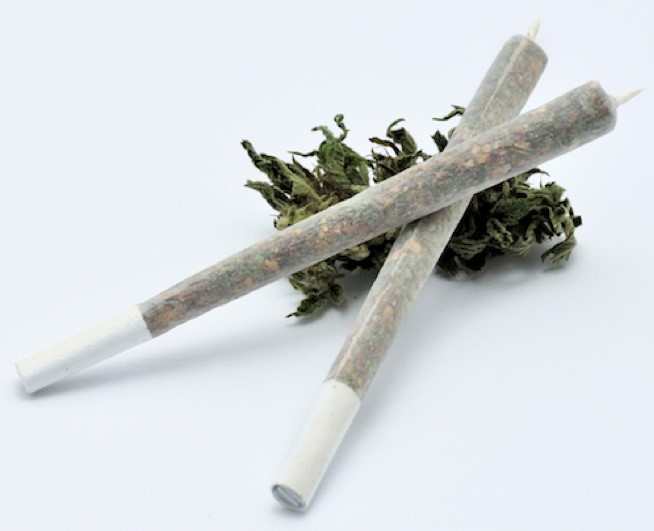
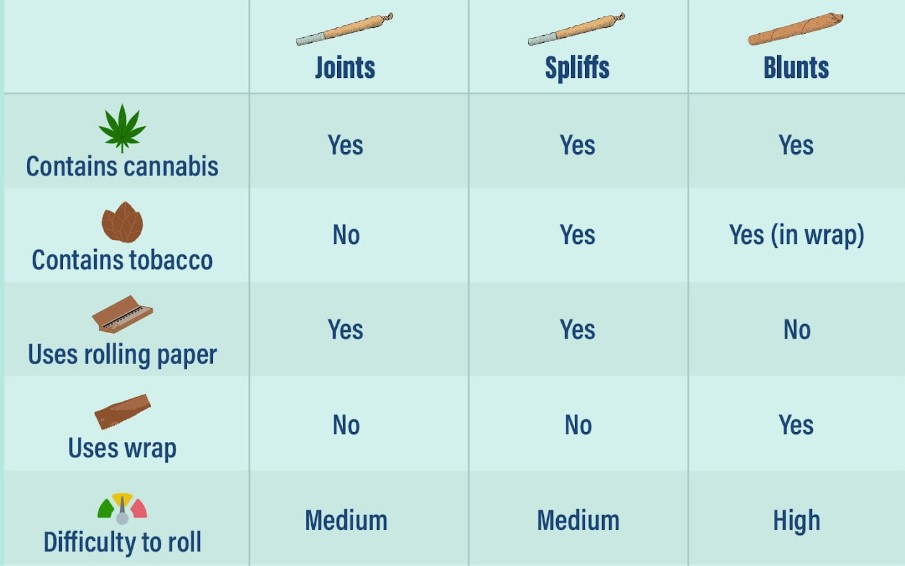
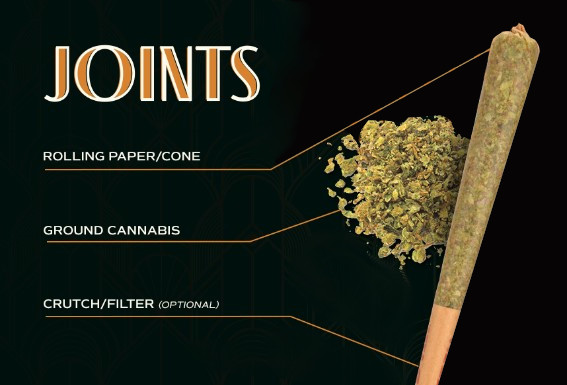
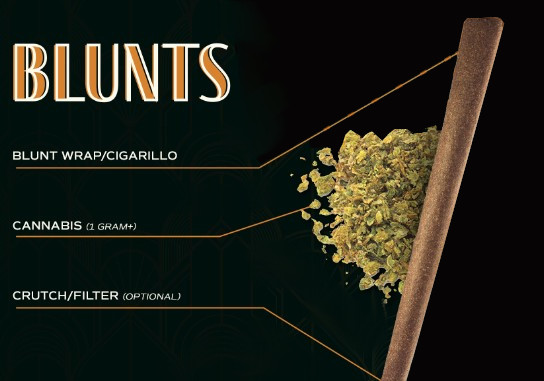
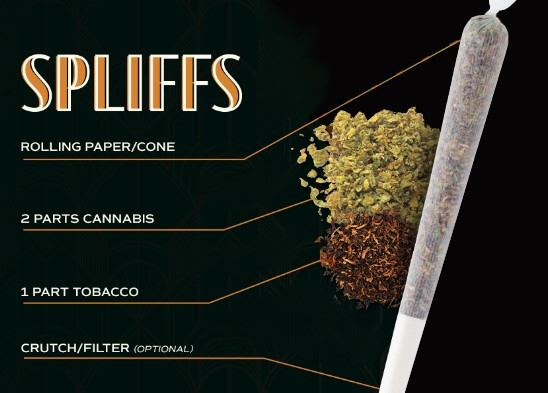
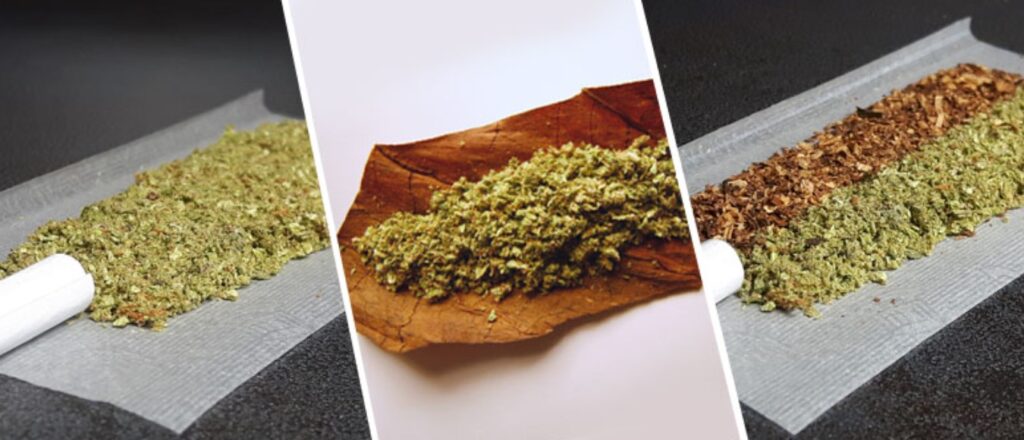
Why not talk about what they have in common, they all get me ripped!!!